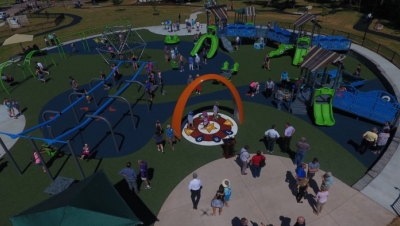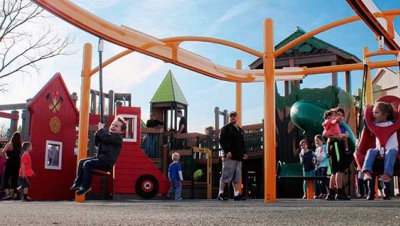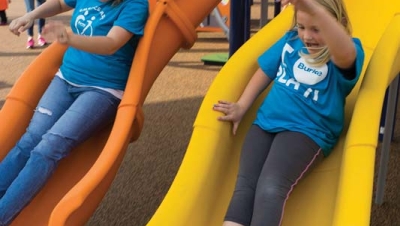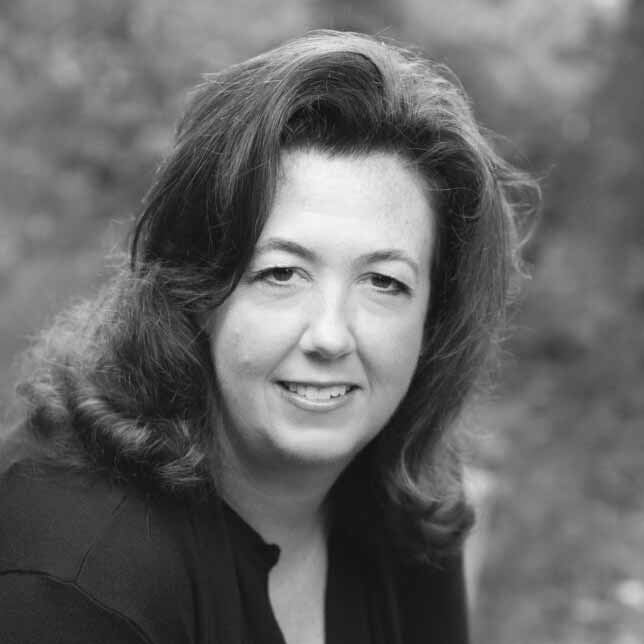Mara Kaplan column - Playworld Systems' Rushmore
Open-ended play allows children to express themselves in play freely and creatively, not bound by preset limitations. It promotes imagination and problem solving. In open-ended play there are no expectations and no specific problems to solve. In contrast, close-ended activities, have a determined outcome, a right answer, and a restriction on individual differences.
Most often when speaking about opened-ended play, we are talking about loose parts or art materials. The simplest explanation is handing a child a piece of paper and crayons will push the child to be more creative than if you hand her a coloring page and crayons.
Here are a few more examples: building a Lego structure by following the instructions on the box—close- ended; building whatever you can make up using Legos—open-ended. A Little League baseball game is close-ended, while a pick-up game with no adults around is open-ended. There is value in close-ended play as well as open-ended, but it does not stimulate your imagination.
However, we can also think of open-ended play out on the playground. In most playgrounds, the play is prescribed. There is a climbing element that has the children climb up in a certain way and then a slide that goes down. For a while most of the children will play on this as the adult designer intended them to do. But then the children either get bored and move on to something else or they start to play on the equipment in ways that were not intended.
Many years ago when I was about 10, my family was traveling with a couple of other families. We were staying at hotel. While the adults enjoyed their coffee, we kids went outside to explore. The only thing to do was a big slide. We took turns going down the slide—but it got pretty boring, pretty fast. So we decided to play “Chicken.” One person would go up the slide and another person would go down the slide. Someone would need to jump off in order not to collide. So much more fun than just taking turns on the slide.
It was my turn to go down the slide and my sister’s turn to go up. I went down, she went up, I jumped off, she fell off and lay on the ground crying. Well, it turns out she broke her arm. She was lucky, it could have been worse. No worries about her long term health. She is now an attorney with twin 8 year old boys. Breaking her arm didn’t hurt her in the long run, but it certainly taught us all a lesson.
To get back on the topic at hand, if there had been a piece of interesting playground equipment that allowed us to make up our play, we would have done so and probably in a lot less dangerous way.
When we compare a piece of equipment like Playworld Systems’ new Rushmore to a typical climber and slide, we begin to see further how open-ended play can not only promote imagination, but also inclusion. The typical climber and slide does not allow any accommodation for differences in a child’s ability. A child who has poor balance and cannot climb by himself will either need to stay on the sidelines or an adult will need to help him. By putting an adult into the mix, you stifle the opportunity for children of different abilities to play together.
On the Rushmore, however, that same boy with balancing issues can figure out other ways to engage and play with his peers. On Rushmore, children jump, climb, roll, crawl, balance, pretend, and whatever else they can devise.
When Playworld Systems tested Rushmore out with eight to twelve year olds, they noticed how long the children stayed engaged, how many different games they came up with, and how they used the underneath space as much as upper space. So our friend with balancing issues can now stand at the end of the rubber, which is pretty wide, and jump to make his friends try to lose their balance up above. He can crawl underneath and hang out with his friends in their new fort. Now we have real inclusion going on, no adults involved, children with differing abilities playing with one another.
Children are very good at adapting their “playground rules” to accommodate other children, if you give them a chance. Think about the pick-up softball game in your neighborhood. If there is someone, like me, who really can’t hit the ball if their life depended on it, then the pitcher may throw the ball more gently then he does for the great players. Children want to include each other, but the equipment needs to give them a chance.
Comments
1













Add new comment